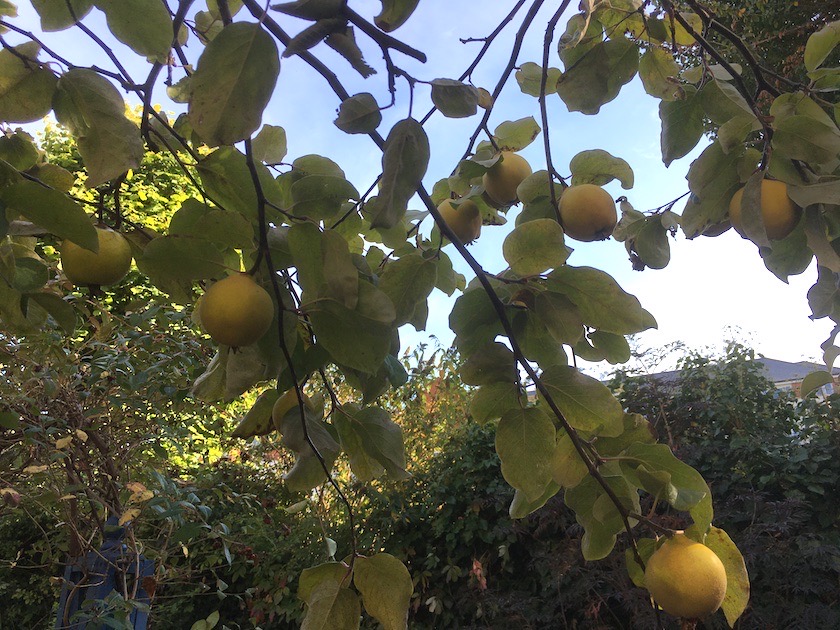
We’ve reached October 2020, and it has to be true that most of us, if not all, stand amazed and appalled each day at how the human world has changed for the worse in nine short months.
Even as we move towards late autumn and winter, let’s turn with pleasure and thankfulness to our plants for a while, and lose our thoughts in such matters as sowing sweet peas, planting trees and growing some leaves for winter meals……………………….
Sowing sweet peas
Ah sweet peas! Beloved of romantics everywhere and the quintessential English garden annuals. They have that lovely combo of colour, scent and artlessness that appeals to the dreaming sentimentalist in us all. But if you want strong early sweet pea flowers next summer, it is much better to get them going now, if you can.
You don’t need loads of room or equipment or heat. You could even sow them in the ground outside if you live in a warmer part of the UK , and can keep the worst of the winter weather off them. I don’t actually do this, mostly because the resident snail population very much enjoy a sweet pea shoot snackeroony before their hibernation starts under the fallen leaves…………….
Sweet pea seeds are nicely big and easy to handle – get the children involved, they’ll enjoy this kind of gardening!
I don’t bother to nick the seed coats with a little knife, as we were told to do back in the day – too much faff, and too likely to damage the seed. If they’re old varieties, I might be tempted to soak them for an hour or so before sowing, but this is certainly not necessary with newer varieties which might even rot.
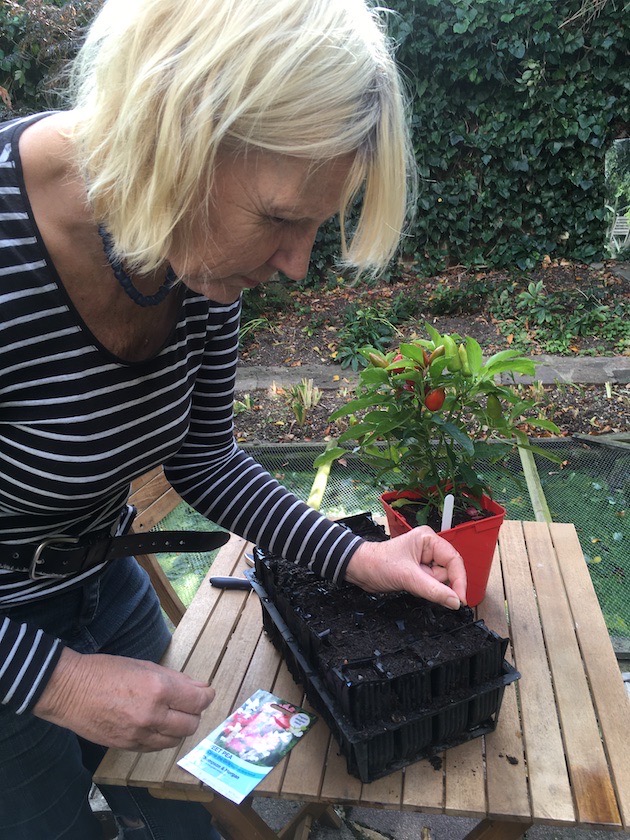
Sowing the seed is just the same as if you were doing this in spring – have a look at our earlier blog when I extol the virtues of root-trainer pots while my sisters fiddle about with Tupperware………….The important thing is that these plants like their roots to go deep, so would actually prefer to grow together in a big pot (6-8 seeds in a 12cm pot, say) than alone in shallow seed-modules.
Put the pots outside in a sheltered place, in a cold frame, cold greenhouse, bright porch, whatever you’ve got – and keep them just moist. If really cold weather is forecast, protect the seedlings a bit – fling a bit of horticultural fleece over the cold frame, bring them indoors on to a window sill for a few days etc.
Come January, you’ll probably need to pinch out the top of each plant to persuade them to make bushy flowering side-shoots. Next March/April, plant them out where you want them to flower. If they were indoors somewhere before, get them used to the big outdoors for a few days by putting them outside during the day, and in at night (‘hardening off’).
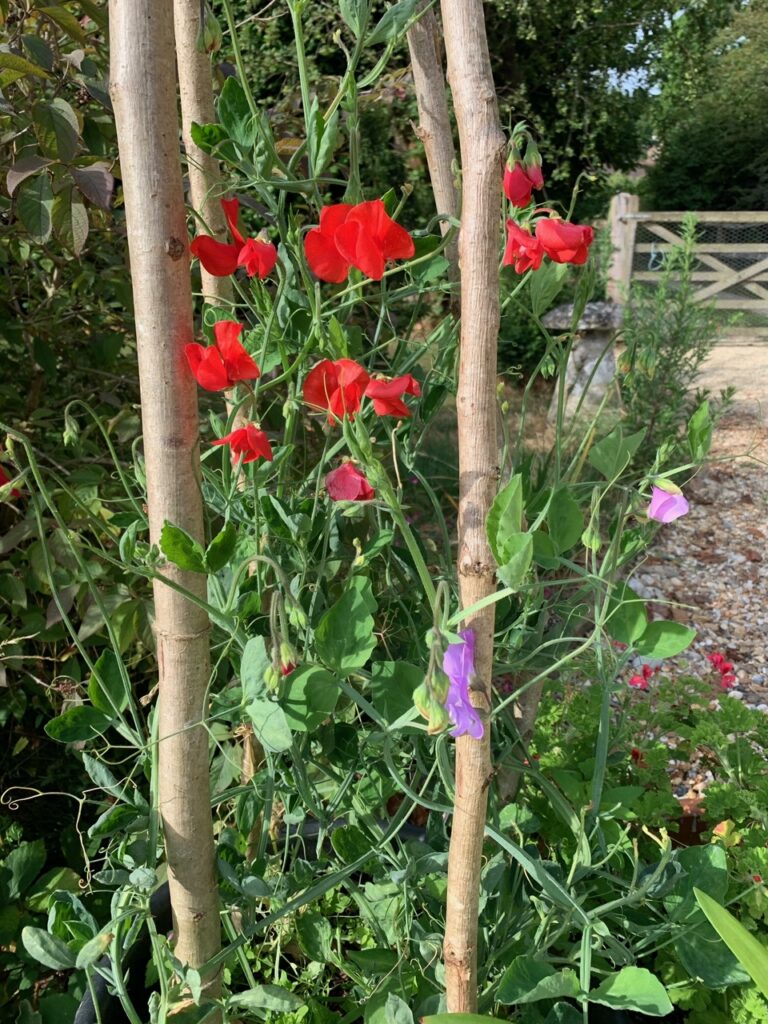
You might be picking sweet peas by the end of May! Your gorgeous autumn-sown sweet peas will flower earlier than all your neighbours’ , and if you keep on picking them every day, their lovely long flowering season will give you the most tremendous bragging rights……….
And by the way, I got some seeds the other day from Country Garden UK, and they have some lovely-looking sweet pea seeds available on their very attractive, friendly and interesting website. The link is at the end.
Planting trees and shrubs
This is a great time to plant new deciduous trees and shrubs. The ground is moist but not yet frozen, and still retains warmth from the summer. Your plant can enjoy these conditions for a few weeks and settle down to hibernate over winter ready to to grow away strongly in spring.
Bare-rooted trees and shrubs are much cheaper than pot-grown ones and will establish quickly if planted now. (Just a short word of warning – you might be better advised to leave planting Mediterranean shrubs like Cistus, Pittosporum and Ceonothus till the spring – they tend not to take kindly to being thrust into the rigours of a UK winter and would rather get their roots down during a British summer instead. Likewise for the ornamental grasses, and the less-tough evergreens like Daphne.)
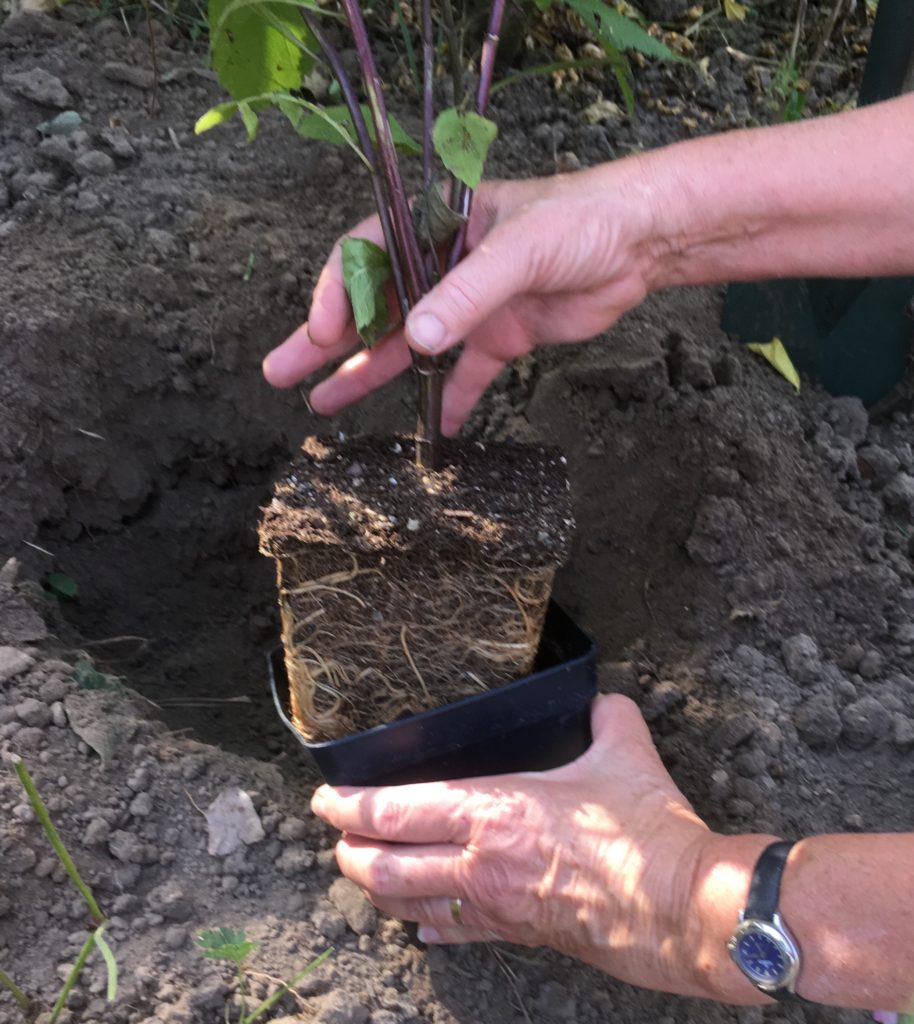
The planting technique is roughly the same for all:
- Soak the pot, or the roots if it’s bare-rooted, so all is uniformly moist.
- Dig a hole that’s about twice the width but the same depth as the pot. Square holes are now recommended for trees to prevent the roots going round and round a circular hole dug in compacted soil. Loosen the edges of the hole with a fork.
- Tease out the roots of a pot-grown plant unwinding any long encircling ones.
- Sprinkle some mycorrhizal granules on the roots, if you have some.
- Place your tree/shrub in the hole with the top of the rootball level with the soil, then backfill with more soil, tamping it down between the roots as you go.
- Firm it down and water the whole area really well, which all helps to give the roots good contact with the soil.
- Stake your plant if it is in a windy spot, because its roots might not be enough to anchor it until it’s established.
- Lastly, just check it every so often and water it in dry weather for the first year.
And cross your fingers for a gorgeous happy plant that will make YOU happy for years to come!
Gardening shorts
- We’re into Hardwood Cuttings time – the easiest cuttings of all! Check out my earlier piece on how to do this, which includes a little video on taking rose cuttings – I will be giving some of these rooted rose-cuttings to my sisters Laura and Caroline next week……..
- A little update of the layering technique I talked about in my last Grow-how piece: apparently layering Verbena bonariensis just like I did with my catmint, really works! I am deffo going to have a go at that…..
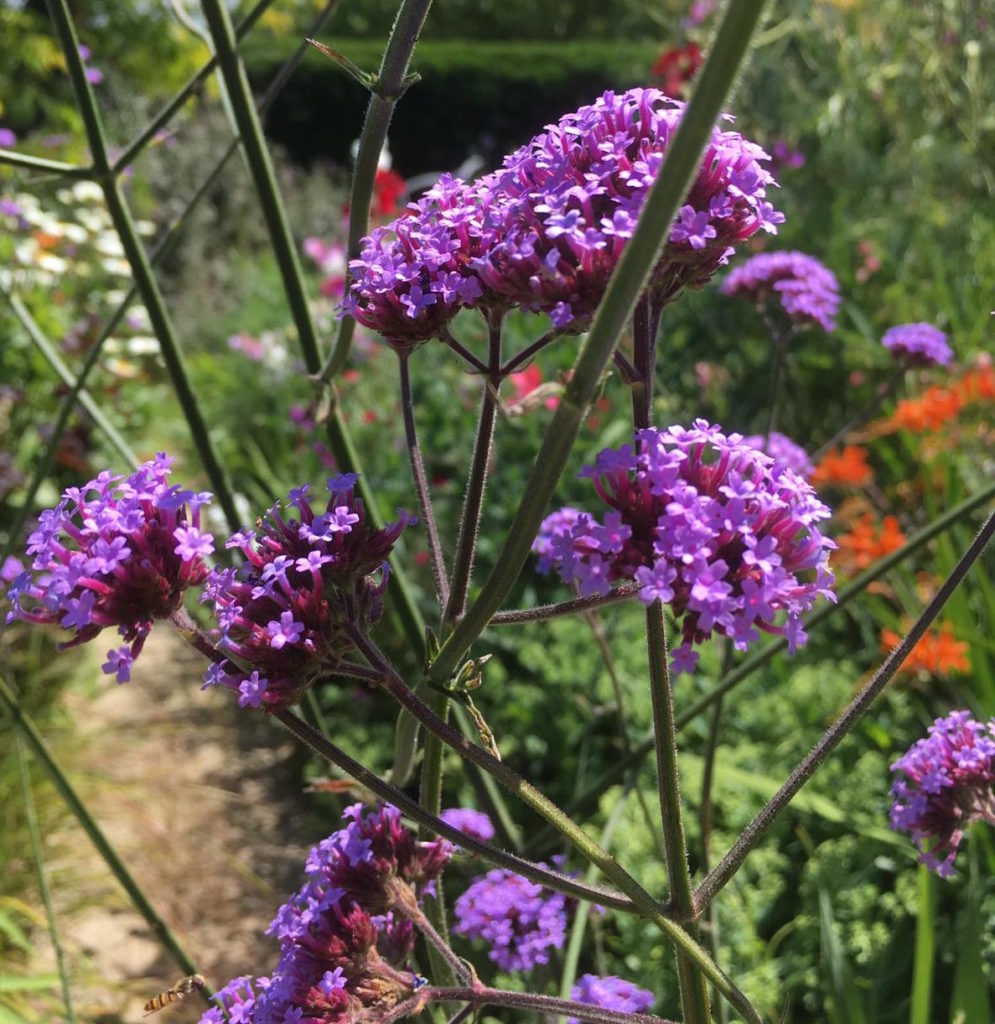
- Our garden is starting to fill with the aromatic fragrance of quinces as they turn from acid-green to golden yellow. This year they’re smaller than usual, which might reflect the dryness of our south coast summer. It’s time to pick them and keep them in a cool dark place for about 6 weeks to soften before using them.
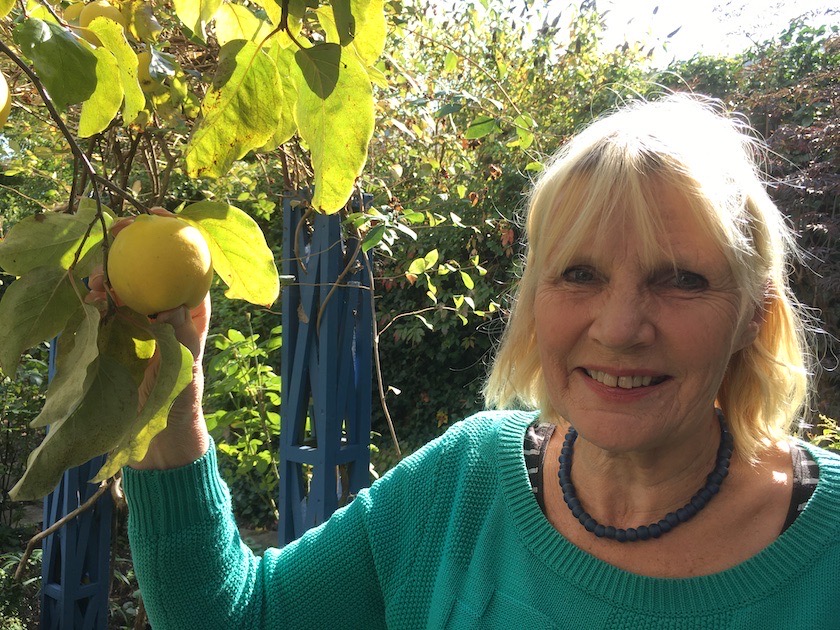
- Sow, or buy seedlings of, chard, spinach, winter lettuce and kale to give you fresh leaves to pick and eat through the winter.
Book review
We all enjoyed having a good read of a new book recently, specifically designed for new or reluctant gardeners – do read our review of it here.
The link to Country Garden UK is here.
If you’d like a bit more gardening chit-chat from the3growbags, just enter your email address here and we’ll send you a new post every Saturday morning.
